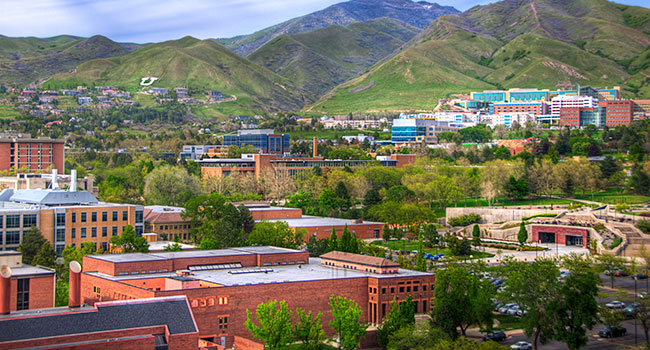
Utah Higher Education Expected to Begin In-person Classes
Systemwide plans to be announced this week
- By Ralph C. Jensen
- May 26, 2020
The University of Utah plans to resume on-campus classes this fall, albeit with modifications to ensure safety of students, employees and visitors. Utah State University President Noelle Cockett said the No. 1 question parents and students ask about fall term is whether USU will have in-person classes this fall.
“We will, we absolutely will. It will not be full and it will not necessarily be a class that is all in person,” she said in a recent meeting.
More specific plans are expected to be released by Utah’s public colleges and universities when the Utah System of Higher Education announces a systemwide strategy for repopulating campuses, possibly later this week.
Utah spokesman Christopher Nelson said the university is working on multiple scenarios for fall, “designed to deliver on-campus, in-person experiences that make the college years memorable for a lifetime.”
Much of Utah’s spring term and all of summer term moved to online instruction due to public health guidelines necessitated by the COVID-19 pandemic.
Fall term will look different. The university will be offering smaller classes to ensure safe physical distancing. That will mean more sessions throughout the day and evening.
Some classes will be offered via hybrid instruction, meaning a mix of classroom and online instruction.
Virtual tools will be available to allow students to work in pairs.
The university plans to offer lab, studio, interactive and creative experiences for small groups.
Nelson said students who live, dine, study and recreate on campus will also experience changes intended to promote public health.
Dining areas may have modified seating arrangements or be limited to carry-out service. Students can expect a higher degree of cleaning.
While the university plans some changes in programming and operations it is also counting on students to help with regular hand-washing and other good hygiene habits.
Public health advisories, knowledge about novel coronavirus transmission and efforts to develop a vaccine are evolving so the planning process will be fluid, Nelson said.
About the Author
Ralph C. Jensen is the Publisher/Editor in chief of Campus Security Today.